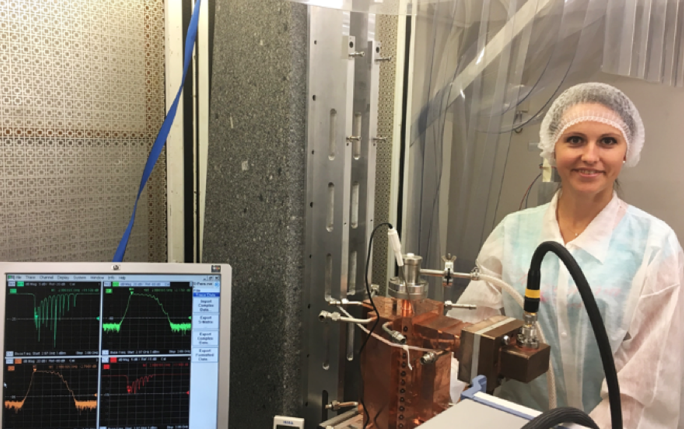A high power test of an S-band accelerating structure for TULIP’s medical proton linac

Several major projects worldwide are pursuing the development of compact hadron therapy linacs. A new generation of linear accelerators offers the potential for a more compact, lower-cost facility with higher treatment precision and additional flexibility as an added benefit. Part of the cost of a linac can be reduced by making it as short as possible - a reduction made possible using the high gradient technology.
To demonstrate this potential, members of the CLIC Collaboration joined efforts with the CERN KT (Knowledge Transfer) group to fund the construction of an accelerating structure based on CLIC technology, but adapted to accelerate protons in the energy range needed for cancer therapy. The high gradient backward traveling wave (BTW) structure prototype for a medical proton linac have been tested using the high-power infrastructure from the CLIC experimental program. Researchers from École Polytechnique Fédérale de Lausanne (EPFL) and the Therapy with Hadronic Radiation (TERA) foundation worked to develop the structures, and students from the University of Valencia and the University of Lancaster were participating in the tests.
The structure operated above expectations. As it is more difficult to accelerate low-velocity protons than relativistic electrons, the predicted gradient of these structures is 50 MV/m. The test structure was able to reach 60 MV/m and behaves consistently when compared to the CLIC structures tested by the CLIC Collaboration.
Anna Vnuchenko actively participated in testing and data analysis. The results have been presented at conferences and at the OMA topical workshops. RF Measurement of the structure was performed after high power testing. As the comparative analysis data before and after high power test showed, the frequency of the regular cells did not change in general. There is a noticeable detuning of the several cells. These data are being prepared for publication. In the near future, the second BTW structure will be tested at the HG RF laboratory in Valencia, now in construction.